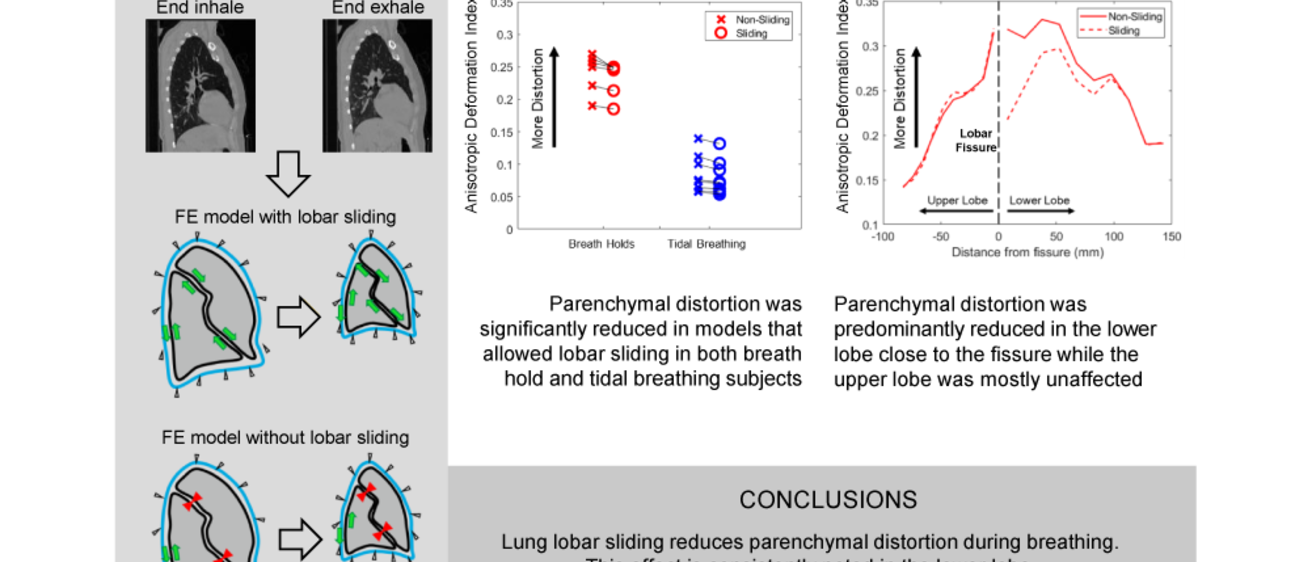A new paper entitled "Role of lung lobar sliding on parenchymal distortion during breathing" was published in the Journal of Applied Physiology. Adam Galloy is the lead author. In this paper, he shows that lobar sliding reduces lung parenchyma distortion during breathing.
From the paper:
Sliding between lung lobes along lobar fissures is a poorly understood aspect of lung mechanics. The objective of this study was to test the hypothesis that lobar sliding helps reduce distortion in the lung parenchyma during breathing. Finite element models of left lungs with geometries and boundary conditions derived from medical images of human subjects were developed. Effect of lobar sliding was studied by comparing nonlinear finite elastic contact mechanics simulations that allowed and disallowed lobar sliding. Lung parenchymal distortion during simulated breath-holds and tidal breathing was quantified with the model’s spatial mean anisotropic deformation index (ADI), a measure of directional preference in volume change that varies spatially in the lung. Models that allowed lobar sliding had significantly lower mean ADI (i.e., lesser parenchymal distortion) than models that disallowed lobar sliding under simulations of both tidal breathing (5.3% median difference, P = 0.008, n = 8) and lung deformation between breath-holds at total lung capacity and functional residual capacity (3.2% median difference, P = 0.03, n = 6). This effect was most pronounced in the lower lobe where lobar sliding reduced parenchymal distortion with statistical significance, but not in the upper lobe. In addition, more lobar sliding was correlated with greater reduction in distortion between sliding and nonsliding models in our study cohorts (Pearson’s correlation coefficient of 0.95 for tidal breathing, 0.87 for breath-holds, and 0.91 for the combined dataset). These findings are consistent with the hypothesis that lung lobar sliding reduces parenchymal distortion during breathing.
NEW & NOTEWORTHY The role of lobar sliding in lung mechanics is poorly understood. Delineating this role could help explain how breathing is affected by anatomical differences between subjects such as incomplete and missing lobar fissures. We used computational contact mechanics models of lungs from human subjects to delineate the effect of lobar sliding by comparing simulations that allowed and disallowed sliding. We found evidence consistent with the hypothesis that lung lobar sliding reduces parenchymal distortion during breathing.
